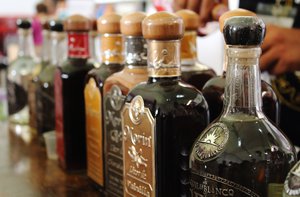
Pallava dynasty
The Pallava dynasty was a medieval South Indian dynasty that existed between the 6th and 9th centuries, ruling a portion of what is today southern India. They gained prominence after the eclipse of the Satavahana dynasty, whom the Pallavas served as feudatories.
Origins
A Sangam Period classic, Manimekhalai, attributes the origin of the first Pallava King from a liaison between the daughter of a Naga king of Manipallava named Pilli Valai (Pilivalai) with a Chola king, Killivalavan, out of which union was born a prince, who was lost in ship wreck and found with a twig (pallava) of Cephallandra indica (Tondai) around his ankle and hence named Tondai-man. Another version states "Pallava" was born from the union of the Brahmin Asvathama with a Naga Princess also supposedly supported in the sixth verse of the Bahur plates which states "From Asvathama was born the king named Pallava". The Pallavas themselves claimed to descend from Brahma and Asvathama.
Though Manimekhalai posits Ilam Tiriyan as a Chola, not a Pallava, the Velurpalaiyam Plates dated to 852, do not mention the Cholas. Instead they credit the Naga liaison episode, and creation of the Pallava line, to a different Pallava king named Virakurcha, while preserving its legitimising significance:


Pallava dynasty
The Pallava dynasty was a medieval South Indian dynasty that existed between the 6th and 9th centuries, ruling a portion of what is today southern India. They gained prominence after the eclipse of the Satavahana dynasty, whom the Pallavas served as feudatories.
Origins
A Sangam Period classic, Manimekhalai, attributes the origin of the first Pallava King from a liaison between the daughter of a Naga king of Manipallava named Pilli Valai (Pilivalai) with a Chola king, Killivalavan, out of which union was born a prince, who was lost in ship wreck and found with a twig (pallava) of Cephallandra indica (Tondai) around his ankle and hence named Tondai-man. Another version states "Pallava" was born from the union of the Brahmin Asvathama with a Naga Princess also supposedly supported in the sixth verse of the Bahur plates which states "From Asvathama was born the king named Pallava". The Pallavas themselves claimed to descend from Brahma and Asvathama.
Though Manimekhalai posits Ilam Tiriyan as a Chola, not a Pallava, the Velurpalaiyam Plates dated to 852, do not mention the Cholas. Instead they credit the Naga liaison episode, and creation of the Pallava line, to a different Pallava king named Virakurcha, while preserving its legitimising significance:
Latest News for: pallava dynasty
Rare collections of stamps and coins on display at Government Museum
 The Hindu
27 Jul 2018
The Hindu
27 Jul 2018
How museum pieces can come alive and command attention
TTD’s missing diamond finds its way to Sotheby’s
Modi getting a reputation for gaffes and historical errors
Dravidian languages may offer insights into Eurasian prehistory
A mystic moment of historic holy flow
When Chola ships of war anchored on the east coast
An Italian sculptor’s vision for Mamallapuram
At 60, this numismatic enthusiast has140 shows to his credit
Site of Ashoka’s stupa in Kanchi still a mystery, says expert
Here are the top 7 places for a wellness holiday in India in 2018
A fort of many tales
School children stumble upon ancient Chola and Pandya coins
- 1
- 2
- 3
- 4
- 5
- Next page »
News Search
Most Viewed
WorldNews.com | 12 Oct 2018
WorldNews.com | 12 Oct 2018
WorldNews.com | 12 Oct 2018
Deccan Chronicle | 13 Oct 2018
WorldNews.com | 12 Oct 2018
WorldNews.com | 12 Oct 2018
The Times of India | 12 Oct 2018
WorldNews.com | 12 Oct 2018





























